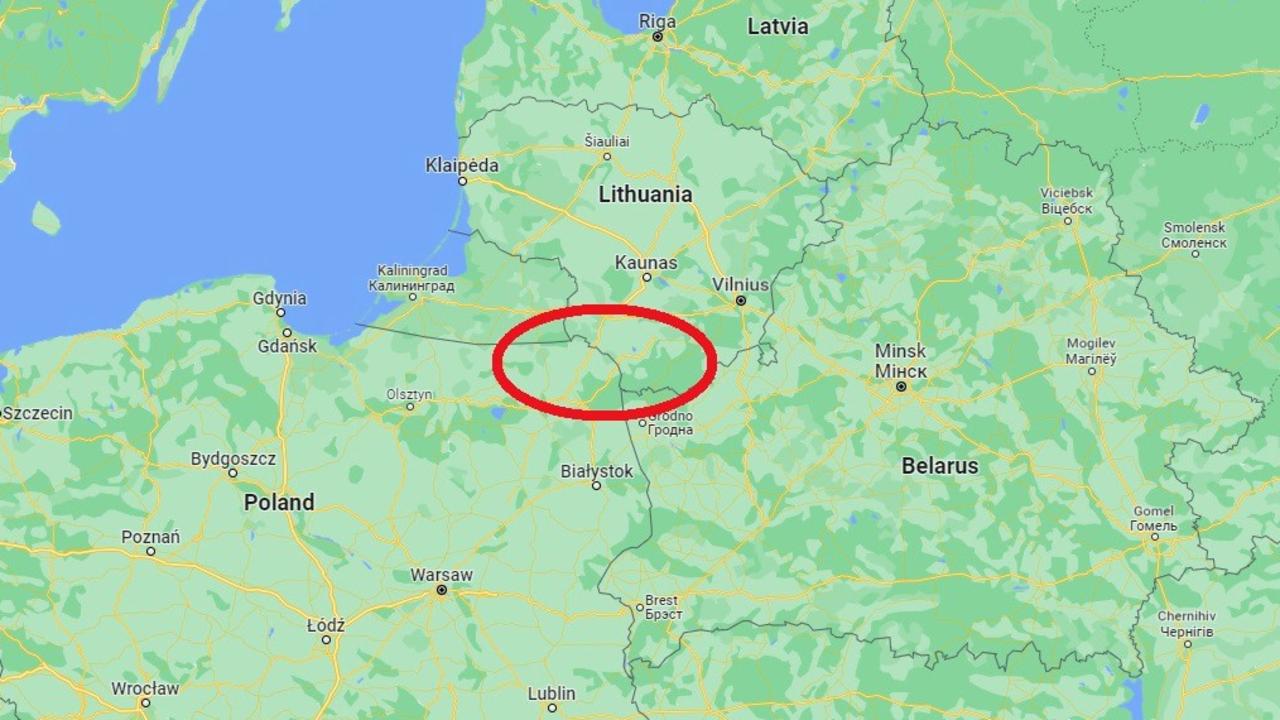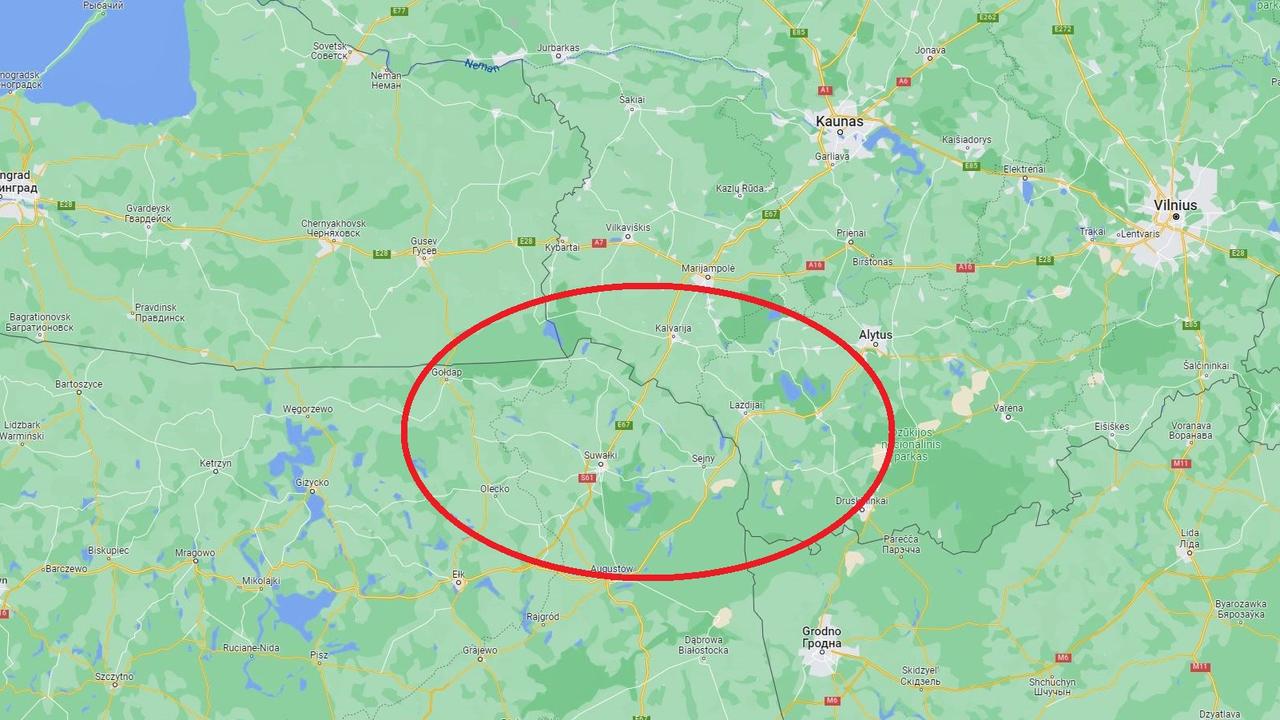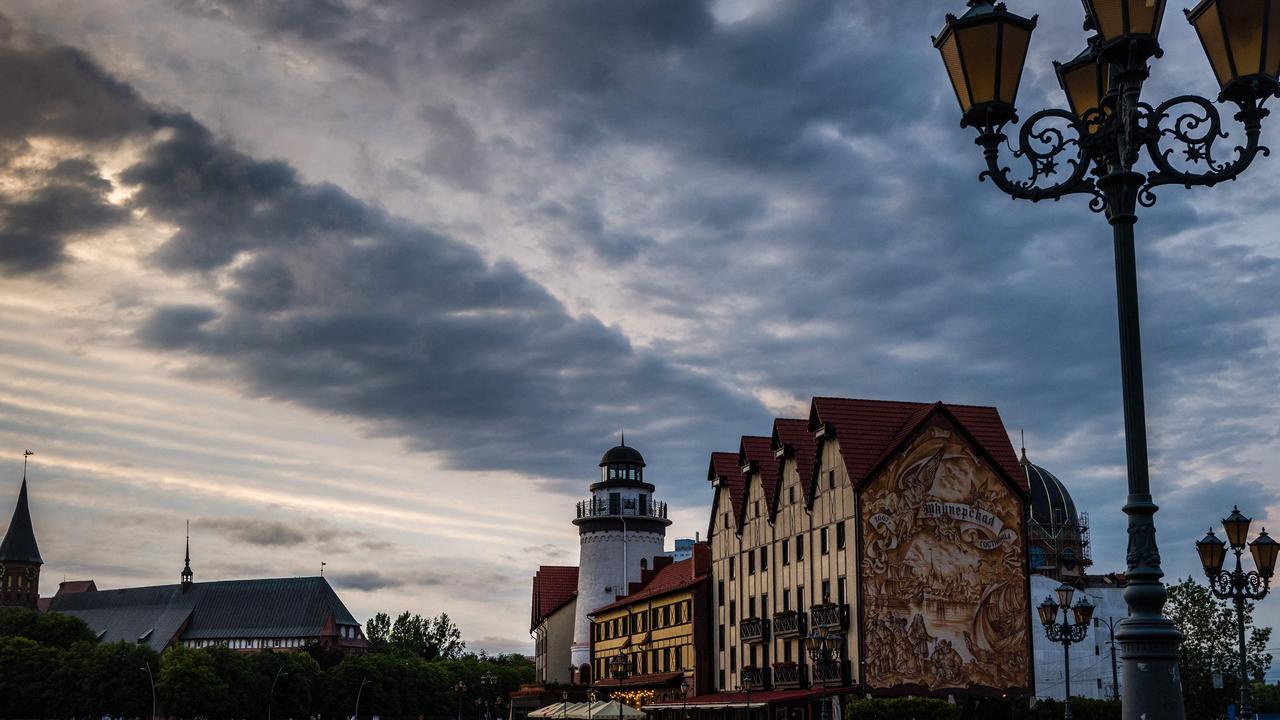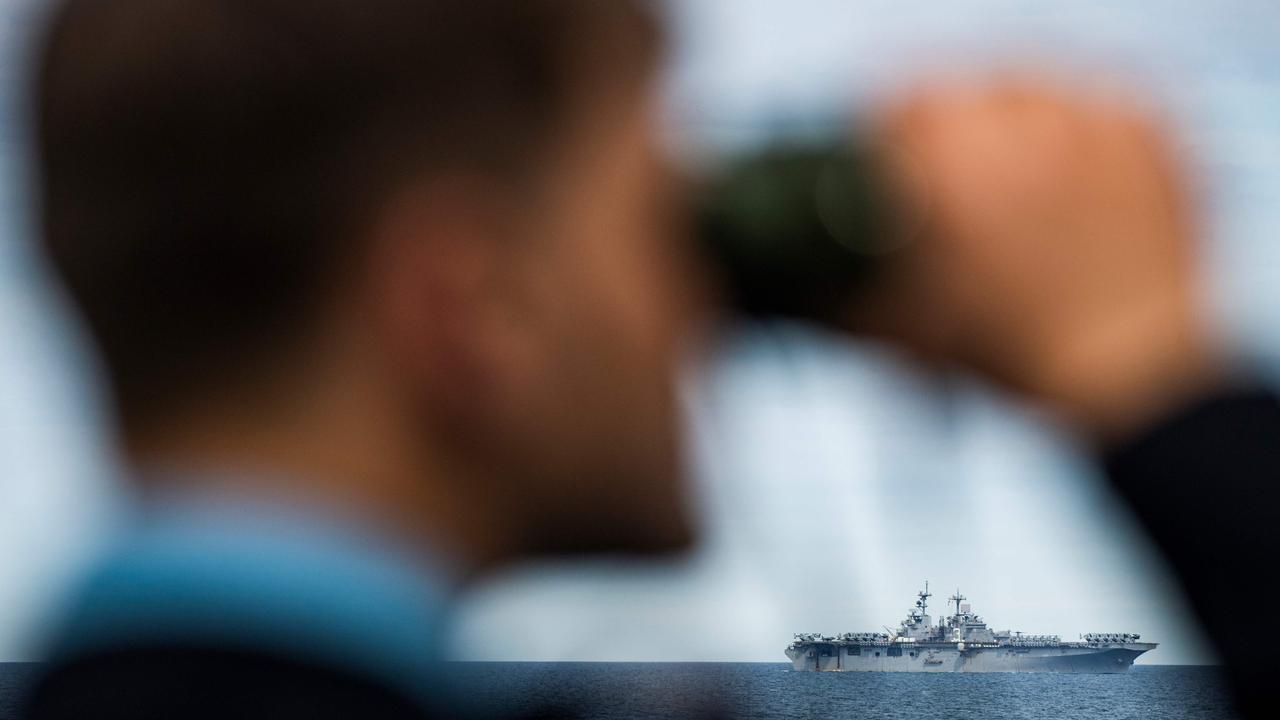Fears Russia aims to take Suwalki Gap bringing Moscow face-to-face with NATO
With all eyes on Ukraine, there’s a new potential flashpoint in Europe – a tiny strip of land and a nightmare for NATO that could lead to global war.

It’s an idyllic, narrow stretch of land – just 80km wide – made up of gentle, undulating hills, flowing rivers and lush forests in the heart of Europe.
It’s also “one of the most dangerous places on Earth” that could be next on Russian President’s Vladimir Putin’s hit list.
And no, it’s not in Ukraine.
There are growing concerns that a power-mad Putin, determined to recreate a modern-day version of the Soviet Union and Eastern bloc, could be contemplating sending Russian forces to capture what is known as the Suwalki Gap.
Straddling Poland and Lithuania the short stretch divides Russia’s Baltic Sea exclave of Kaliningrad from Moscow’s client state of Belarus. It’s also the only land connection between the Baltic States and their Western allies.
Given Poland and Lithuania are both in the NATO military alliance, any move by Russia to capture the Suwalki Corridor will demand a response by the West. And that risks a confrontation that could spiral into a global conflict.

Tensions have only increased this week. That’s because of Moscow’s apoplectic reaction to Lithuania enforcing European Union sanctions by barring the transport of some goods via the only rail line that links Kaliningrad to the rest of Russia – which runs through its territory.
“A Russian move to seize control of the corridor may seem far-fetched,” said Professor John R Deni from the US Army War College’s Strategic Studies Institute.
“Nonetheless, if Moscow’s reinvasion of Ukraine has any central lesson to offer at this point, it’s that US and allied officials must prepare now for worst-case scenarios”.
Website Politico succinctly summed up the vulnerability of the Suwalki Gap.
“It’s the most dangerous place on earth,” stated a headline this week.

It also, at first glance, appears to be a somewhat undefended place, say reporters and academics who have visited the area.
Writing for Politico, Matthew Karnitschnig said he didn’t see one military vehicle or soldier on the Lithuanian side of the border with Belarus.
“The border post was closed and deserted, with neither soldiers nor border patrol anywhere in sight.”


Why the Suwalki Gap is so important
That the Suwalki Gap – named after the Polish town of Suwalki which is its biggest population centre – exists at all is a quirk of history.
In the wash-up from World War II, as the victors redrew the borders of Europe, the Soviet Union gained control of the German port of Konigsberg and its hinterland.
The remaining Germans were expelled and the strategic sliver was renamed Kaliningrad.
It gave Moscow a year-round ice-free port and a naval presence deep into European waters.
At the time Lithuania, that borders Kaliningrad to the north, was part of the USSR. Poland, to the south, was also firmly in Moscow’s orbit.
Not anymore. Lithuania declared itself independent of the Soviet Union in 1990 and went on to join the European Union and NATO, along with its fellow Baltic States of Latvia and Estonia. Poland also turned away from Moscow and is an EU and NATO member.
That left Kaliningrad, a piece of Russia stranded between NATO states.
However, all that divides Kaliningrad from Belarus and its pro-Moscow government is the Suwalki Gap.
“This gap could be easily overcome. Russia has very powerful forces stationed in Kaliningrad and with troops from Belarus it could be quickly closed,” Alexey Muraviev, a Russian strategic defence affairs expert from Curtin University told news.com.au in 2017.
Kaliningrad also hosts a bevy of Russia’s nuclear weapons.

Russian control of Gap would be a NATO blow
As has been seen from the war in Ukraine, where Russia has successfully carved out a path from Crimea to the Donbas region, Mr Putin loves a land corridor under his control.
Taking the Suwalki Gap would successfully provide just such a land route to the exclave.
There is also another tantalising benefit to the Russian leader.
The Suwalki Gap is the only road and rail connection from the Baltic States to the rest of the EU and its NATO allies.
An electricity connection to Poland, that will eventually allow the three nations to sever themselves from Russia’s power grid, also runs through the Gap.
Bringing the corridor under Moscow’s control would isolate the states and make them far harder to defend.

The Baltic States, as well as Poland, are protected by being part of NATO. Any attack on the Gap would trigger Article 5 of NATO’s mutual defence agreement.
But NATO numbers on the ground are still relatively thin, numbering only around 5000 troops on rotation across all three nations.
In the past, the Alliance has shied away from bolstering numbers, wary of Moscow’s wrath.
Rather, NATO has suggested troops could be reinforced if the Kremlin’s attention turned towards the three. It’s also conducted recent naval drills in the Baltic Sea.
Baltic leaders fear that won’t be enough and the time has come for Western nations to ramp up their protection.

Can’t assume Russia won’t invade
Bogged down in messy and grinding battles in Ukraine, there’s no sign that Russia is considering what would be a highly dangerous and risky move on the Suwalki Gap.
But sabre-rattling pro-Kremlin commentators have said the three countries are there for the taking.
And the blocking of some goods transiting into Kaliningrad by Lithuania has led to dark – albeit vague – statements from Moscow apparatchiks about retaliation.
Lithuania has insisted it’s just doing its EU duty and most goods and indeed all passengers are free to travel across its territory.
“The West cannot assume that Russia won’t make a move against the Suwalki Corridor just because it appears illogical,” Professor Deni told journal Foreign Policy in March.
“In fact, during last year’s Zapad military exercise, Russian and Belarusian troops reportedly practised closing the Suwalki Corridor by attacking from Belarus in the direction of Kaliningrad.”
Next week NATO leaders meet in Spain’s capital of Madrid with Russia’s actions top of mind.
The vulnerability, and defence, of the so-called “most dangerous place on earth” is sure to be on the agenda.






